A California millionaire built a massive '13th-century Italian castle' in the middle of wine country - take a look inside
"I never had the intention to build a tourist trap," Sattui told the St. Helena Star. "What I [wanted] was to build something unique, something beautiful, something authentic, something I personally love, and I was hoping that other people [would] respond to it as well and they have."

Castello di Amorosa is one of the most unique experiences you can find in Napa Valley. It's a tourist trap, but still worth a visit.
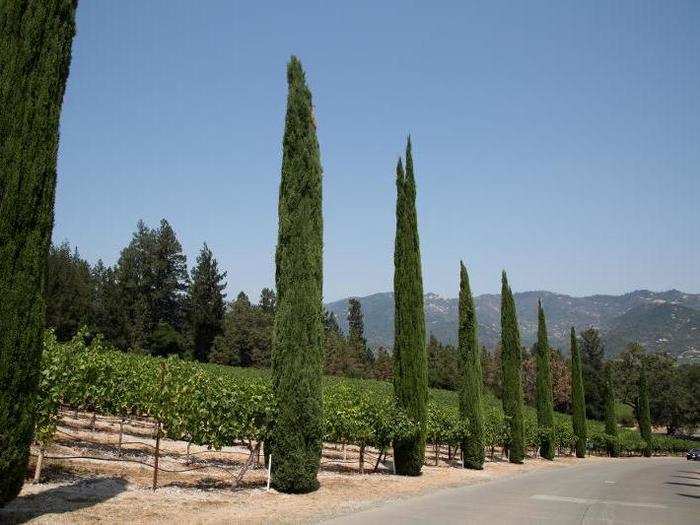
Throughout the tasting, people scribbled notes on the menus provided, taking note of the Italian-style wines they wanted to pick up from the gift shop after the tour.
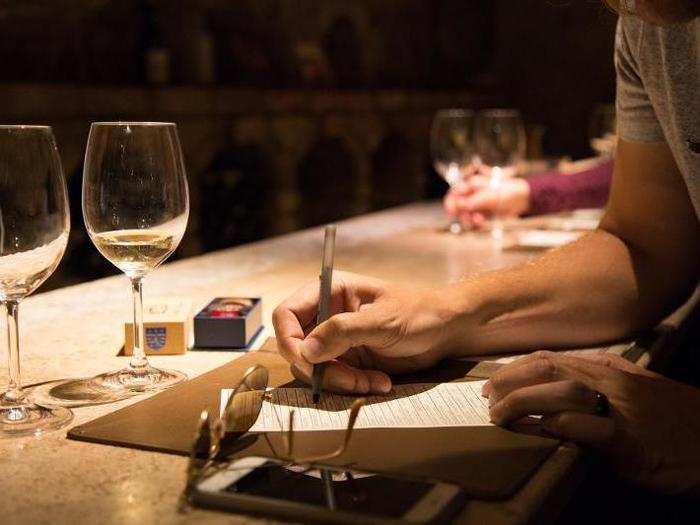
Visitors could also buy a small box of pairing chocolates for about $5.
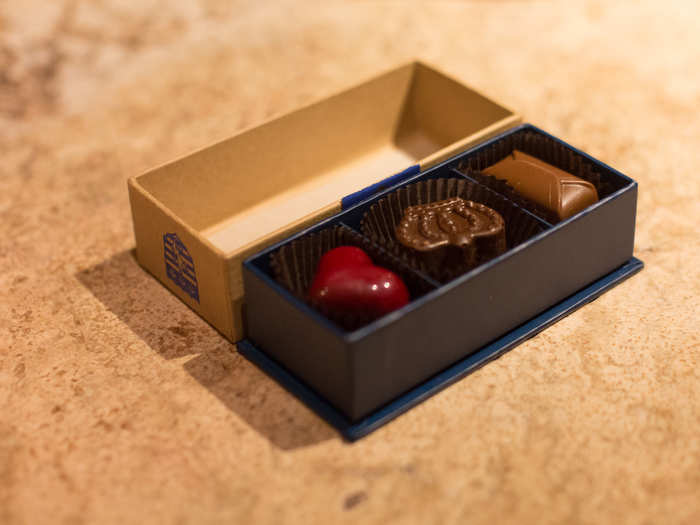
Each tour group is sequestered in a small cellar, where they enjoy a complimentary tasting of five current-release wines from Castello di Amorosa.
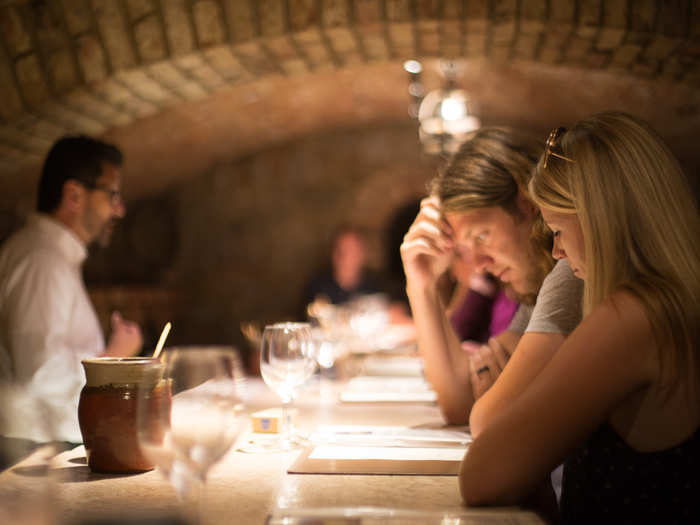
... And we entered a premium area for wine tasting.
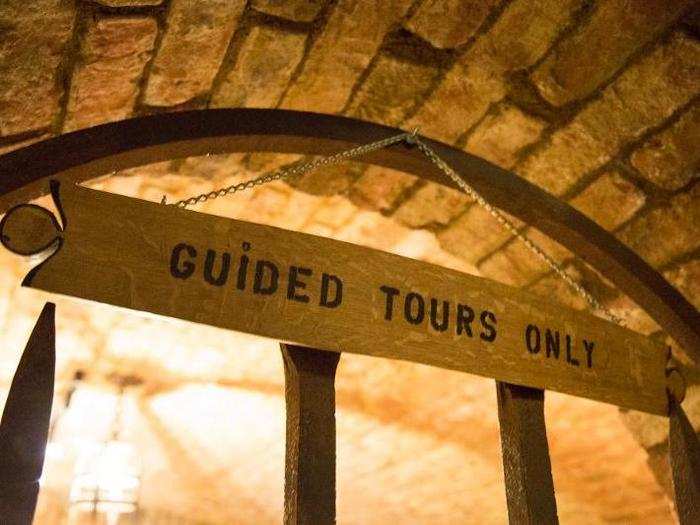
We walked past the gift shop, which is decorated with frescos painted by Italian artists.
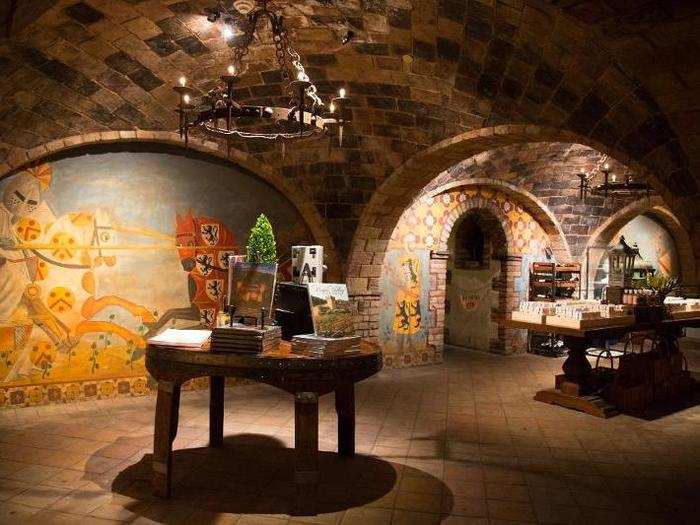
It tasted much more earthy than the Cabernet I tried at another winery in Napa earlier that day. I prefer my red wines fruity, but I appreciated this one for its differences.
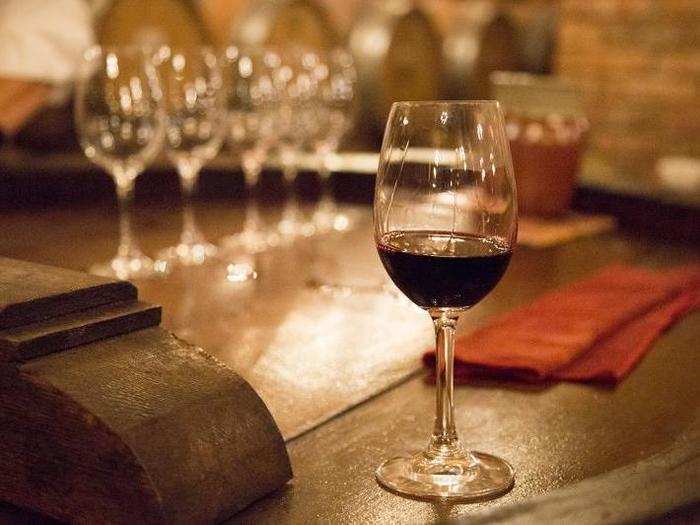
Then came the best part of the tour — wine tasting! Thomas poured glasses of the 2013 Cabernet Sauvignon Napa Valley, a wine bursting with aromas of cassis and mushroom.
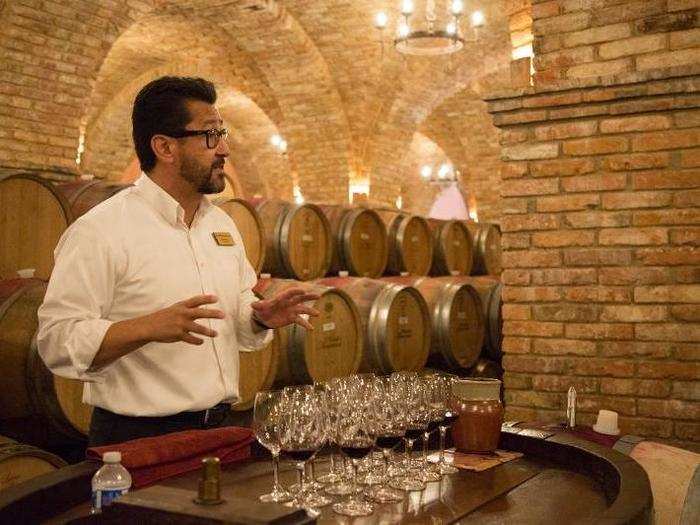
The precise level of detail was something to behold.
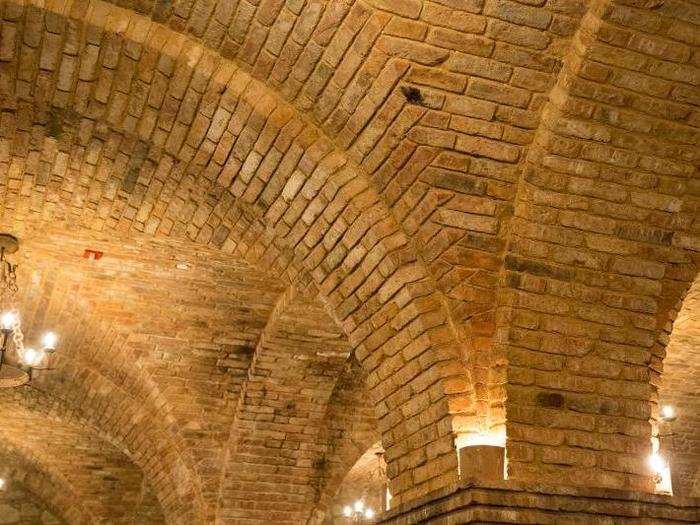
At last we arrived in the grand barrel cellar, the crown jewel of Castello di Amorosa. The 12,000-square-foot room took two years to build, largely because of its vaulted ceilings.
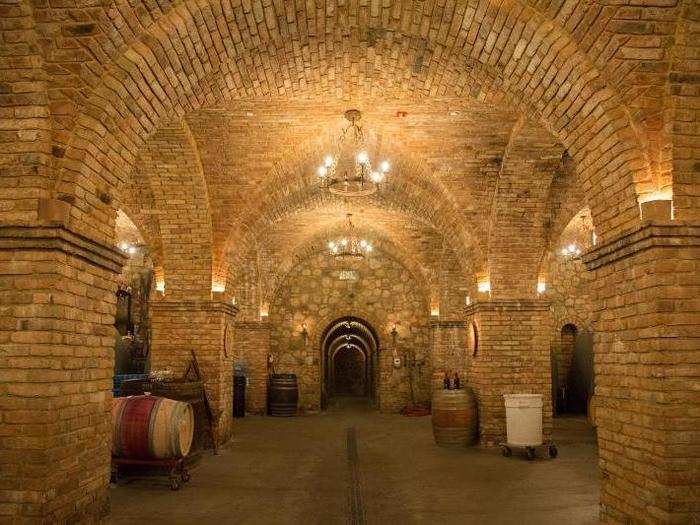
The Iron Maiden from the late Renaissance was one used to confine prisoners. It contained spikes and sharp nails that people would impale themselves on as they grew weary.
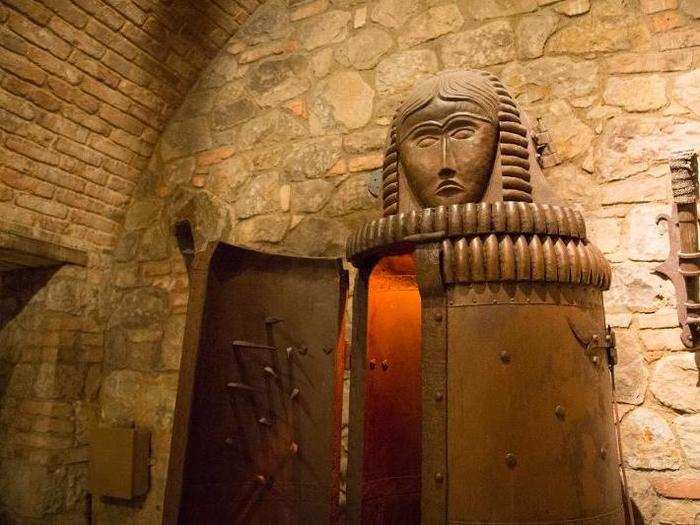
There are two original artifacts in the torture room. Interrogators would strap their prisoners into this prickly chair and light a fire underneath, causing them to squirm.

A popular stop on the guided tour is the torture room — a staple of medieval castles.
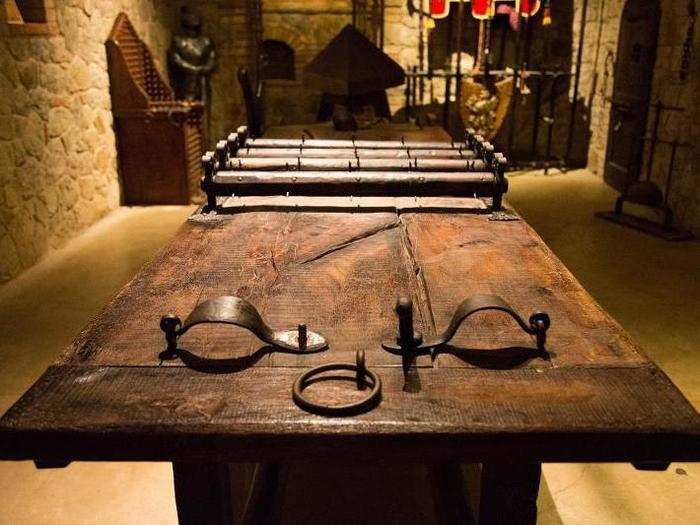
We passed a chamber where Sattui keeps hundred-year-old wine bottles from the family's original winery. They've been passed down through four generations of winemakers.
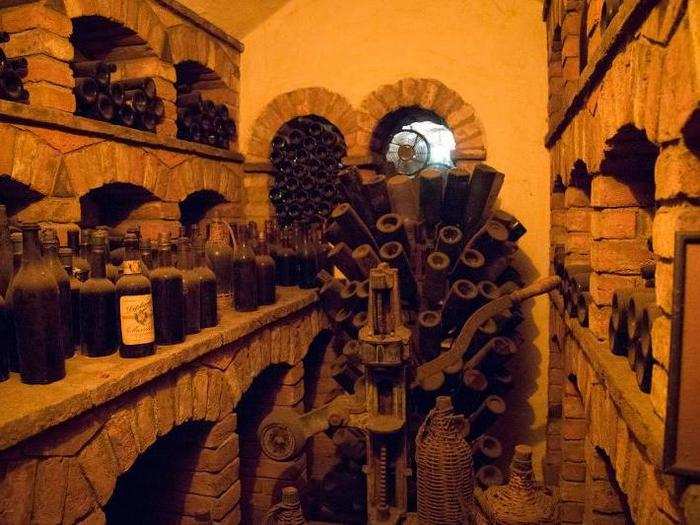
This 13th-century locker room is where knights would dress in armor and prepare for battle.
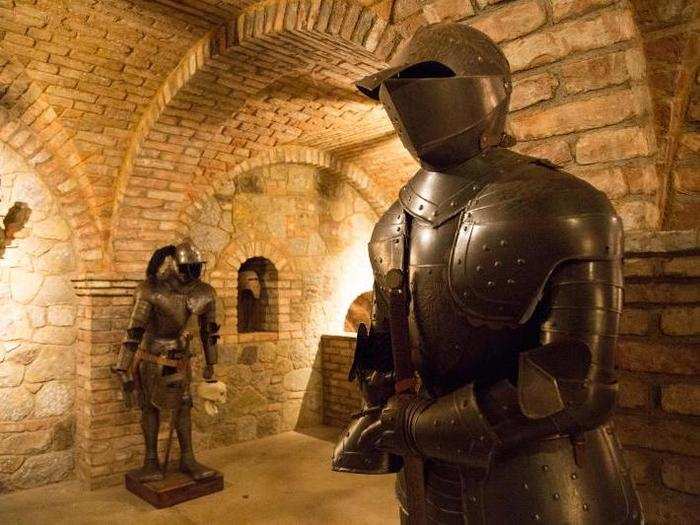
The barrels are so cumbersome to move around, it's easier for winemakers to fill them in the caves. They pour wine through "very clean" hoses attached to holding tanks, Thomas said.
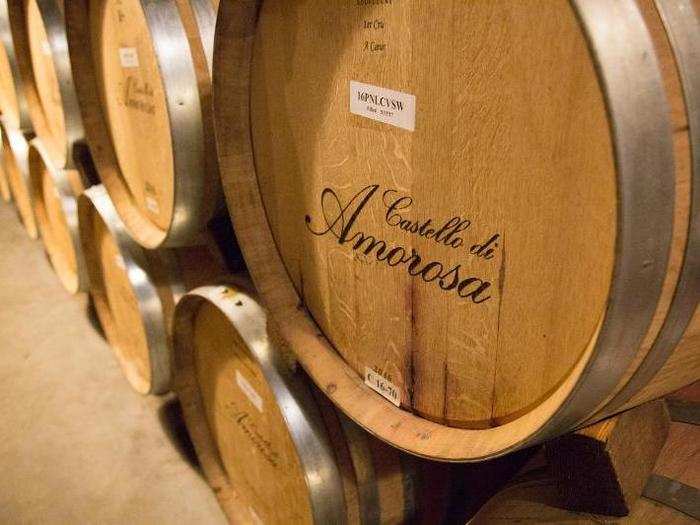
We found French oak barrels around every corner. The caves, located underground, offer an ideal environment for aging wine with cool, constant temperatures and high humidity.
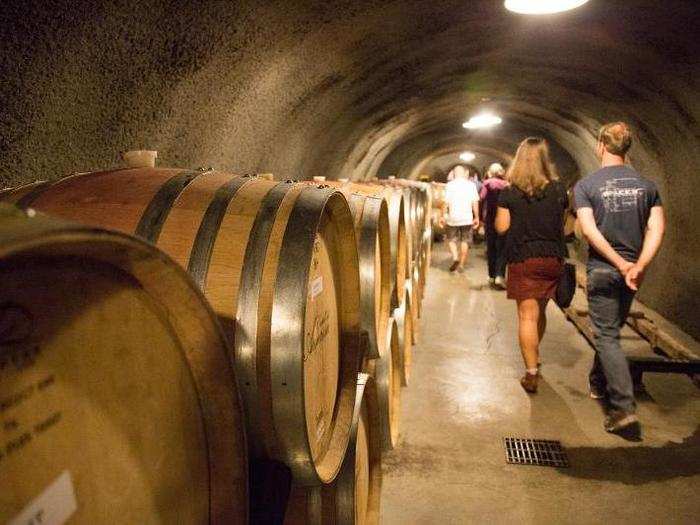
The castle includes 107 rooms in all — 90 are devoted to winemaking and wine storage.
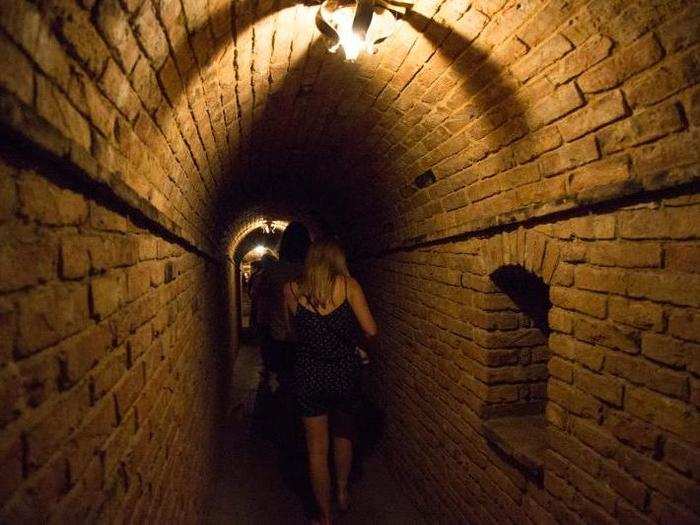
Fermentation tanks sit outside, drawing a stark contrast to the brick castle walls. Castello di Amoroso contains nearly one million antique bricks from torn-down Austrian palaces.
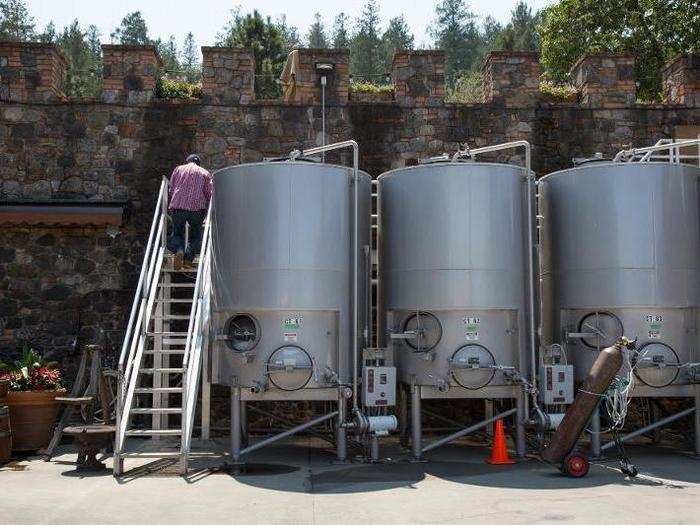
Source: Castillo di Amoroso
One of the first details our tour guide, Thomas, pointed out was this crooked tower. During construction, county officials wanted 10 feet skimmed off the castle's height to comply with building codes. Sattui asked his crew to do so in a haphazard manner so the tower would look battle-worn.

Castello di Amorosa became one of the most profitable operations in wine country.
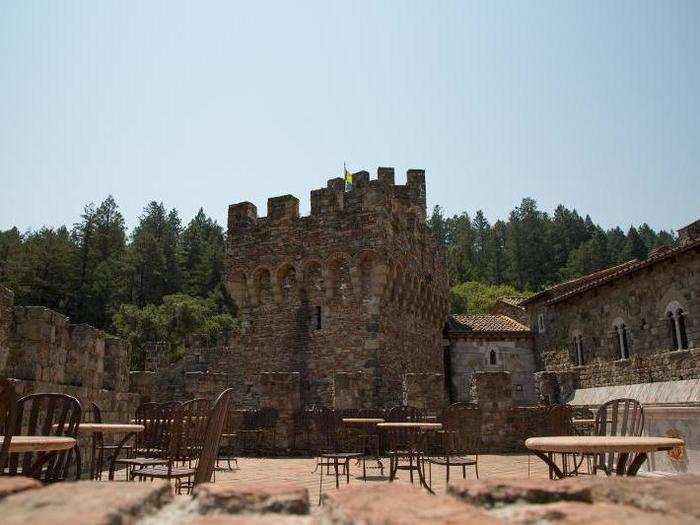
In addition to hosting wine tastings and tours, which start at $25 per person, the company sells more than 50,000 cases of wine direct-to-consumer each year, with no other distribution.
I joined a guided tour and premium wine tasting for $40 on a recent Friday afternoon.
"I ended up spending everything I had, sold all my stock, had to borrow money from Wells Fargo. I just hope I don't go broke," Sattui said at the time of the castle's opening in 2007.
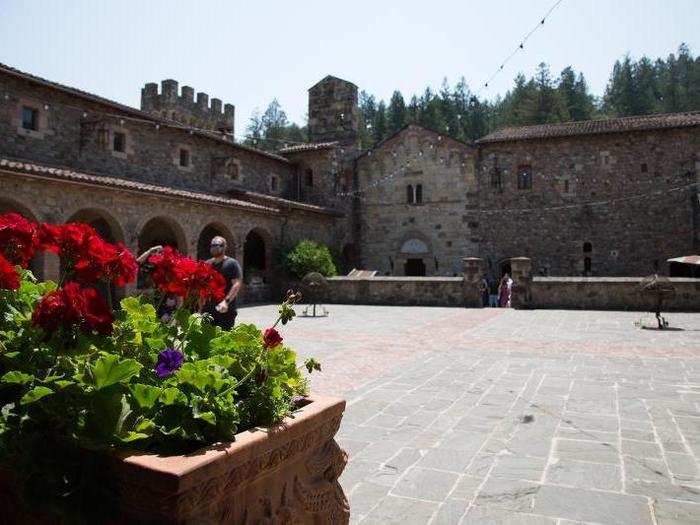
In the early 1990s, Sattui — already an established wine-maker — bought the land with plans to replant a vineyard on the property and build an 8,500-square-foot winery.
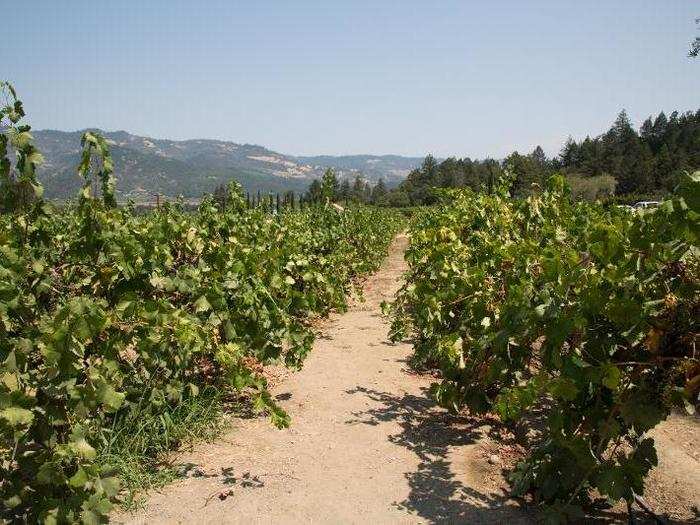
His fascination with Old World Italian architecture took over and Sattui began to draw up plans for a more grandiose winery. He spent years visiting and studying medieval castles and wineries throughout Italy and Europe, as part of an exhaustive quest for authenticity. Sattui wanted every detail — from the drawbridge to the dungeon — to mimic 13th-century structures.
He hired master builders from five countries to bring his vision to life.
And it is — sort of. Owner Dario Sattui once wrote, "Castello di Amorosa appears to be an authentic castle for one reason only. It is an authentic castle, though fancified."
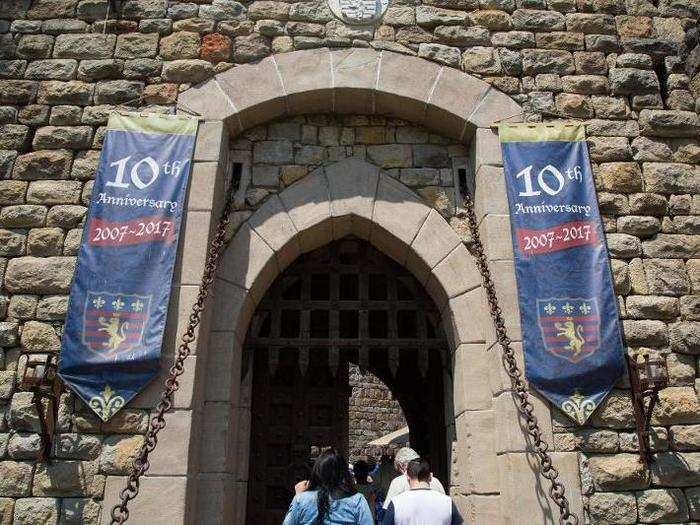
Source: Castello di Amorosa
Castello di Amorosa looks like a 13th-century castle in the Italian countryside.
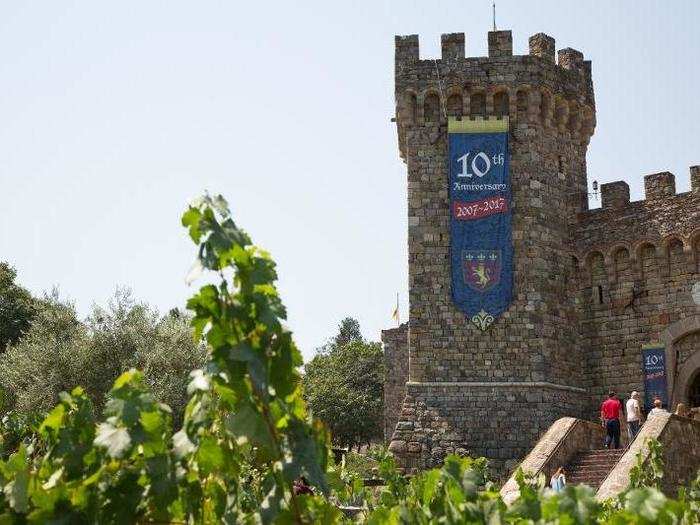
Popular Right Now
Popular Keywords
Advertisement